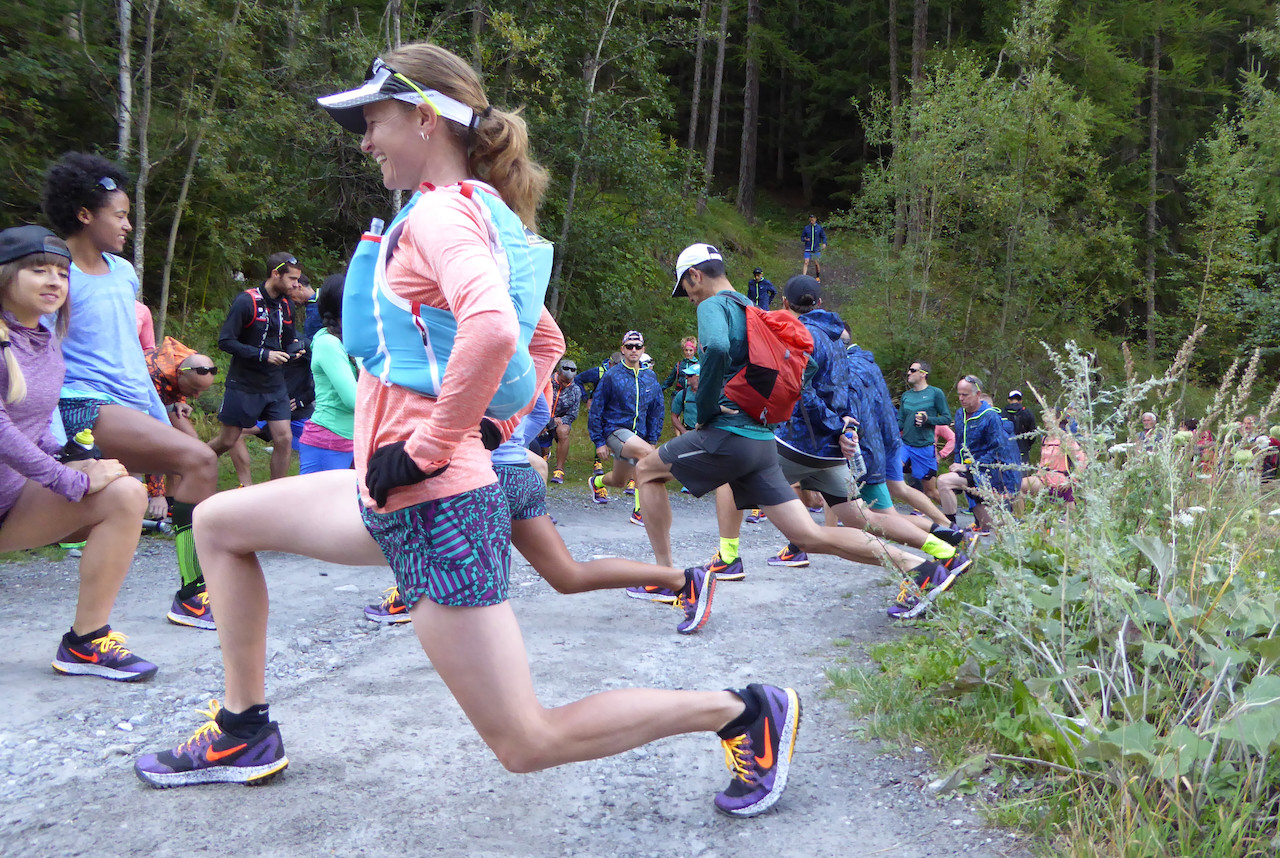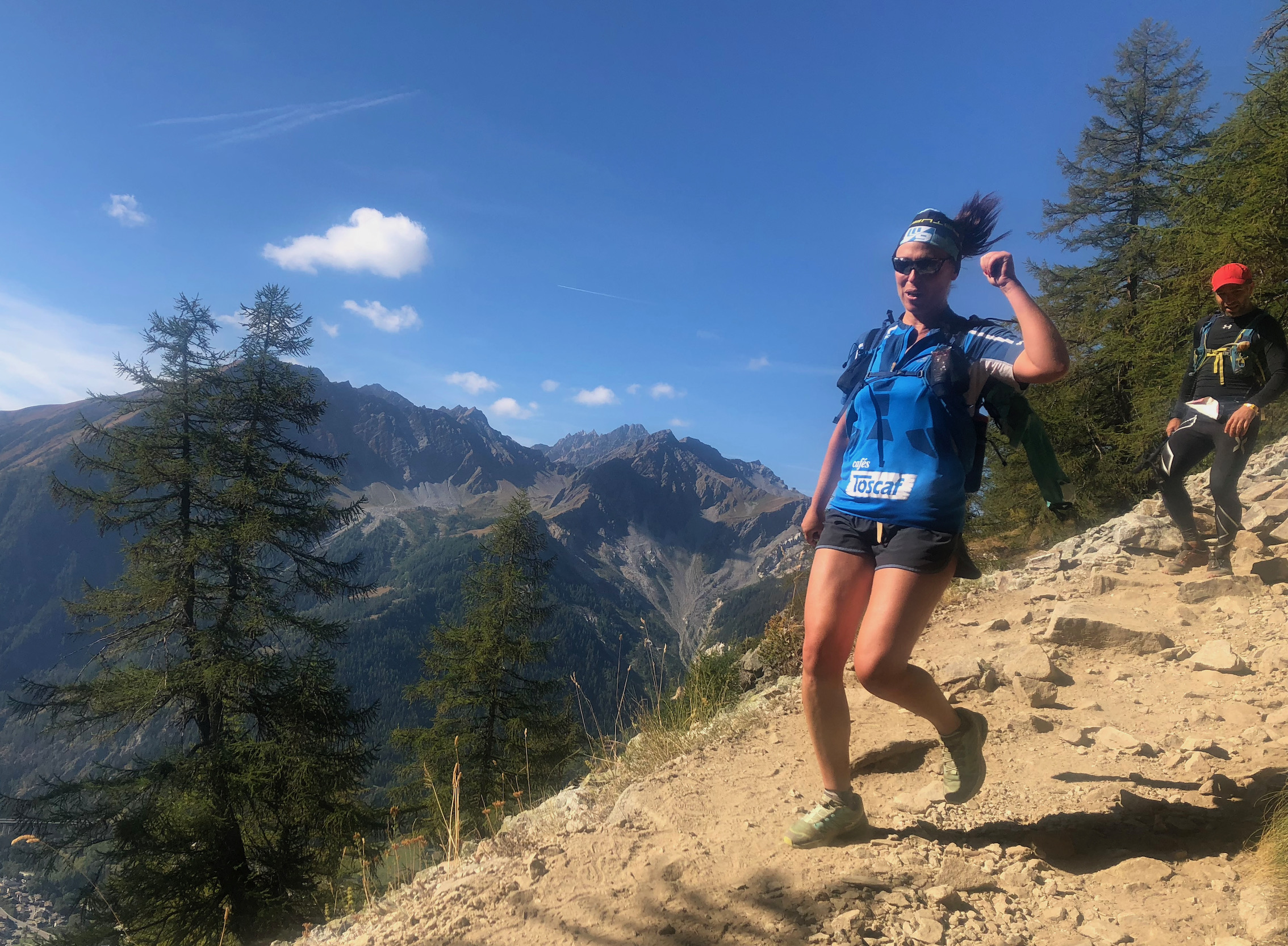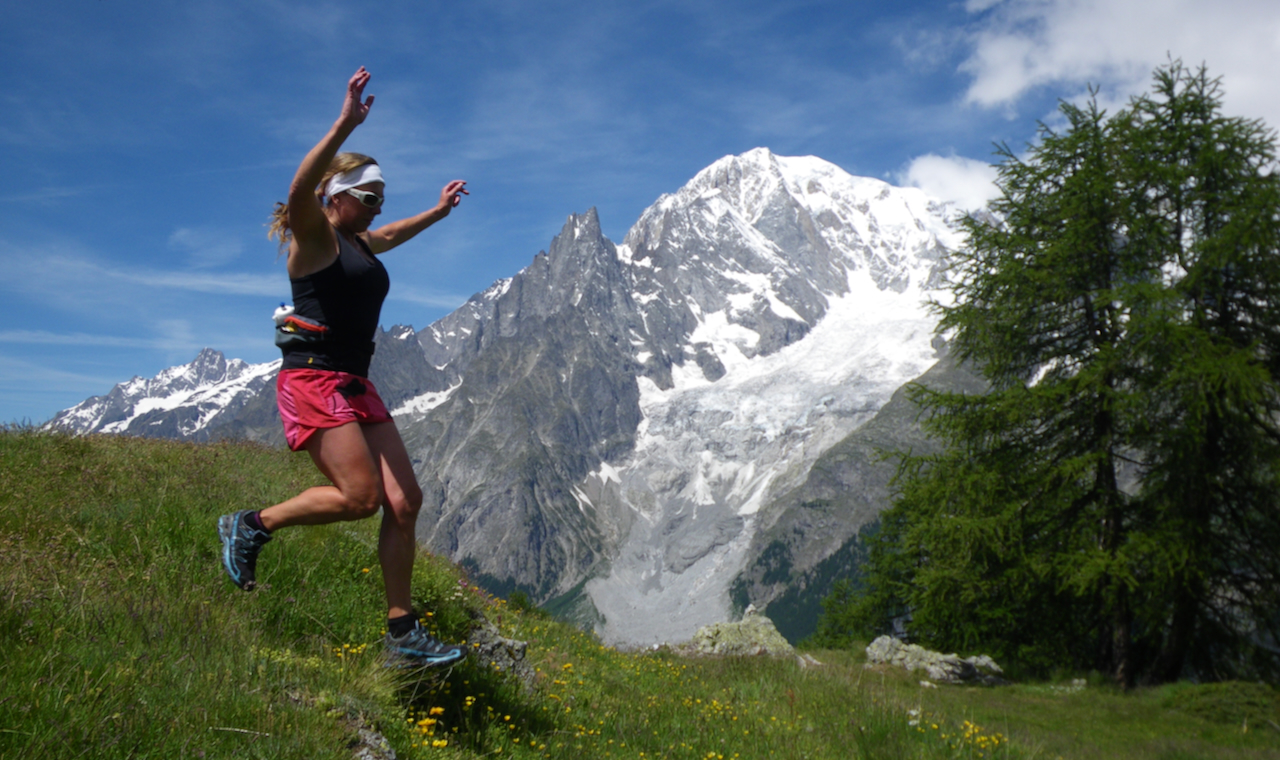 Warm ups are important
Warm ups are important
How do you train to climb mountains when you live in the flat lands? For many of you booking a trail running trip the daily ascents appear to be your greatest concern. How can you possibly get fit enough for your trip and gain full enjoyment from your adventure if you do not have easy access to a hill? We've pulled together some ideas on how to train and get in shape for mountains. Even if you are not a runner you might want to try these exercises and get yourself in shape for the Alps.
Ever spent the day gasping for breath and wondering why you have paid to punish yourself on a hill climb? We often joke with our guests who are having a little 'moan' that they have paid good money to suffer and should be enjoying it. Only it should not be like this. If you are fit and ready for your mountain adventure then you should be able to climb while enjoying the views, and maybe the occasional chat, without feeling like you are about to collapse and end your days in an alpine meadow. Could be worse places?
If you are prepared for your trip it will undoubtably mean your enjoyment level is higher, but we know from experience that it's not always easy to find the time in a busy work or home schedule to train. In particular in the run up to a holiday your work load can increase as you attempt to 'clear your desk'.
Here we will explore a few of the ways you can train for these larger climbs at home, when you’re not in the mountains. This might help you better prepare for a trip, a race or simply improve your technique, encouraging proper engagement of your core and legs. Intense exercise, particularly intervals and repeats like the ones outlined below can, as with any exercise, pose an injury risk, but stretching and warming up beforehand will reduce this.

Prepare for the hills and you'll welcome the climb. Descent during Tor des Géants Race to Courmayeur, Italy
Finding a short steep climb isn’t impossible even in the biggest of cities or flat landscape. Your 'steep' could be artificial such as the stairs in a multi-story carpark, on a bridge, or even in a block of flats though make sure your light on your feet or the neighbours might have cause for complaint.
Repeat running up, for example, up 10 metres,(32 ft) then either gently walk down as you rest or take 10 seconds at the base as a recovery period, repeat this 20 times. These high intensity repeats will simulate the end of a big climb when your legs are more fatigued.
Remember to try and maintain your form even through the final reps when you’re more tired, focus on powering with your arms and keeping your chest up to fill with air.
You could try doing repeats on a section of hill you would be running on anyway during your run, that way you can incorporate two training activities into one – but be careful not to over train and ensure you get plenty of rest.
Sprints even on a flat ground can be very beneficial as they increase your aerobic capacity and leg strength, and you will find when it comes to running up hills that you are better prepared. Sprinting is an efficient way to increase calorie burn, improve your running speed, and increase muscular endurance.
Try a 50-metre (164 ft) sprint then 30 second rest or walk back to the start and repeat 20 times. Sprints are a good exercise to do with friends as you can talk and encourage each other during the rest period. Often the time goes much quicker if you can motivate each other.
To avoid injury you should always warm up before sprints as it helps to increase blood flow, heart rate, and your core temperature. A case of revving up your engine before committing to the Formula 1 track.

A world of stunning views aways you! Just get those legs ready so you get the most out of the experience
If you have access to a gym, then experiment with treadmill settings. Set it to a gradient you can run comfortably on for one minute, perhaps around 5%, and then do one minute on this, one minute on the flat and repeat until fatigued.
Remember your training for hills, not speed so there’s no need to go quickly. You have the benefit of all the statistics in front of you so you can easily glance down to look at how long you’ve got left or your power output etc.
It might be a good idea to note down how long you lasted and how many repetitions you did, you can then look back at this for reference after a few weeks of training and feel accomplished.
On a rather amusing note I know of someone who has a treadmill at home, and they practice climbing on the treadmill while wearing skis and boots to simulate ski touring up a mountain. This is their way of getting fit for the ski season. Where there is a will there is a way! Even with no hills you will work something out.
You don't need access to a gym or the outdoors to strengthen your legs, you can even do leg exercises in your kitchen.
Remember not to lose faith when doing training sessions which aren’t typically just running, it’s worth it for the memories you will make once you are on the mountains!
For more information about trail running, hiking, cross-country skiing, and snowshoeing with Tracks and Trails, speak to one of our expert team by calling +44 (0)20 8144 6442 or emailing This email address is being protected from spambots. You need JavaScript enabled to view it.
